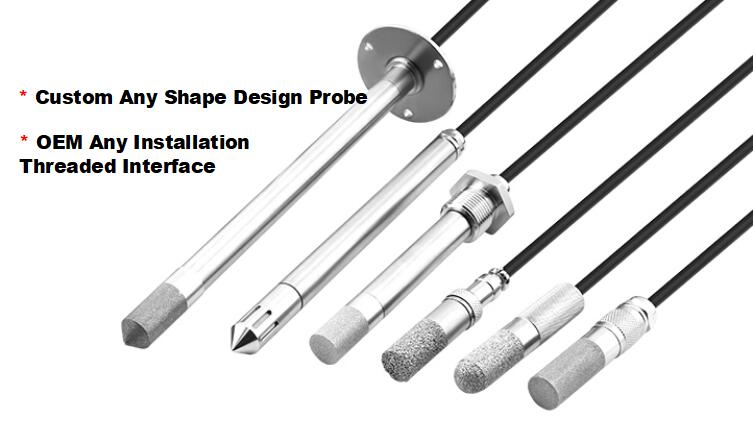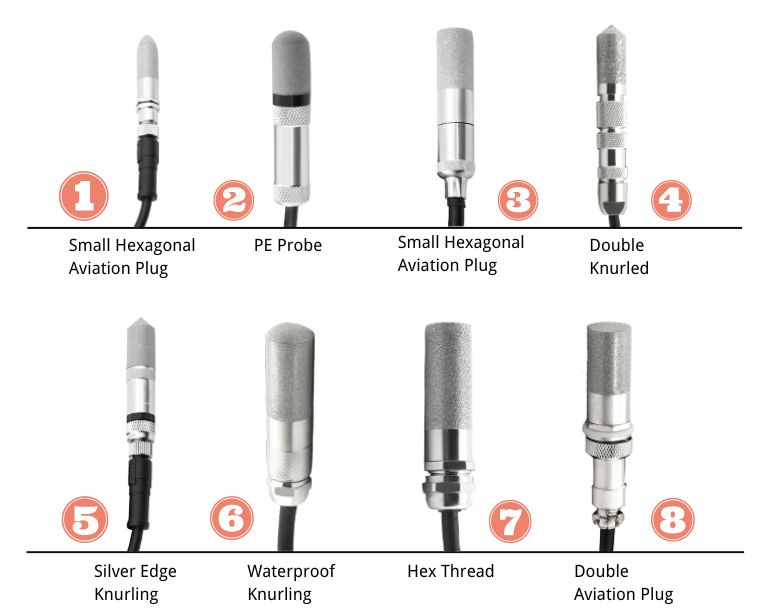-
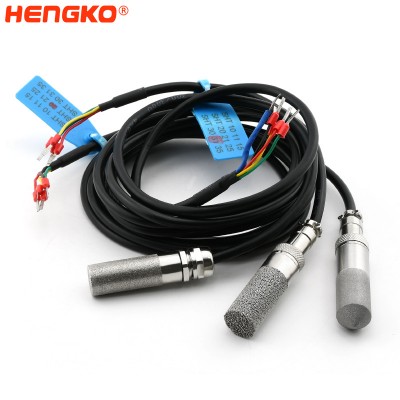
IP67 waterproof heat resisting industrial humidity sensor
HENGKO temperature and humidity probe detectors can be applied in various fields: telepoint base stations, electronic control cabinets, production sites, sto...
View Detail -
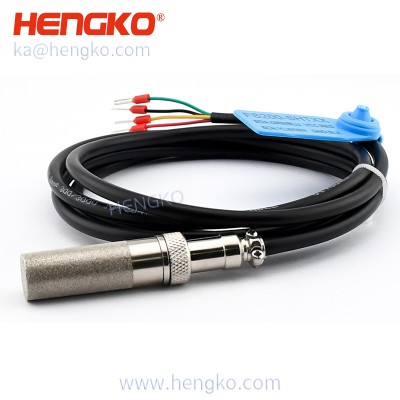
Relative humidity and temperature probe for combustion air and other humidifiers, Vapor...
HENGKO temperature and humidity probe can be applied in various fields: telepoint base stations, electronic control cabinets, production sites, storehouses, ...
View Detail -
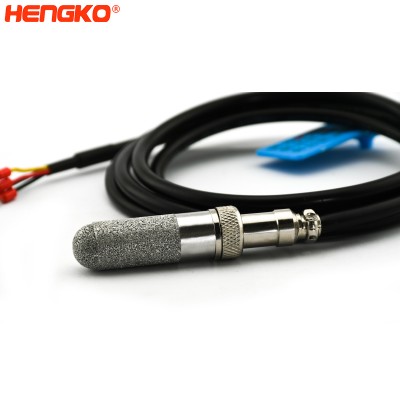
HENGKO HT-P102 high accuracy humidity sensor with stainless steel sensor probe for mach...
HENGKO HT-P102 temperature and humidity sensor includes an RHT-H series sensor module in a sinter stainless steel encasing. The casing is weatherproof and wi...
View Detail -

Large air permeability I2C temperature and humidity sensor probe (RHT series) with IP65...
HENGKO digital temperature and humidity module adopt high precision RHT series sensor equipped with a sintered metal filter shell for large air permeability,...
View Detail -
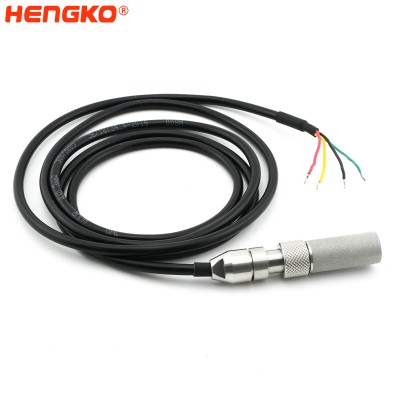
waterproof porous stainless steel relative humidity probe RHT20 RHT35
HENGKO soil moisture module adopts high precision RHT series sensor equipped with a sintered metal filter shell for large air permeability, fast gas humidity...
View Detail -
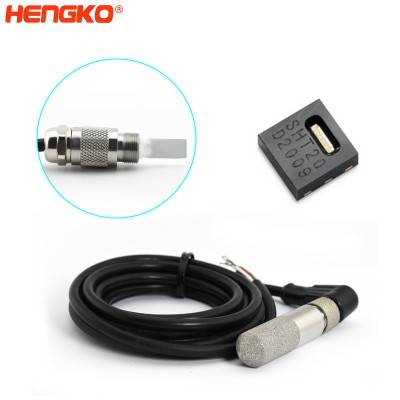
Right Angle M8 Connector (L-shaped) Industrial IP67 waterproof temperature and humidity...
Not sure what length of cable you need? Break a connector in the field and need a quick replacement? HENGKO high-precision I2c temperature and humidity senso...
View Detail -
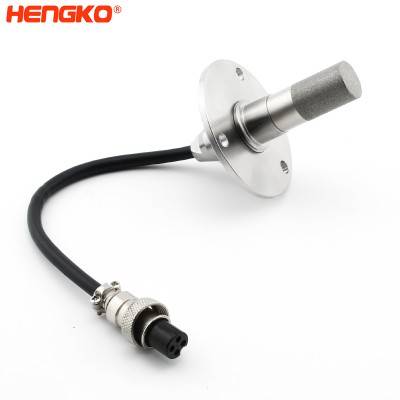
RHT (0~100)% RH I2C flange temperature humidity probe for agricultural sciences
HENGKO temperature and humidity sensors can be applied in various fields: telepoint base stations, electronic control cabinets, production sites, storehouses...
View Detail -
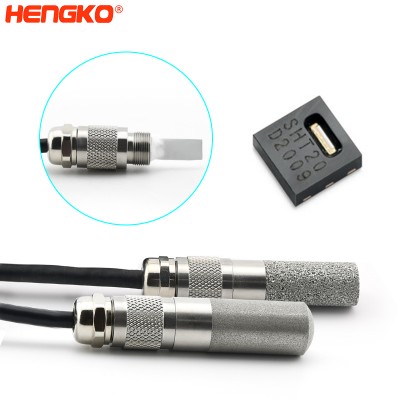
RS485 RHT35 IP65 temperature and humidity transmitter sensor probe for Climate monitori...
HENGKO temperature and humidity module adopt high precision RHT series sensor equipped with a sintered metal filter shell for large air permeability, fast ga...
View Detail -

±2% ultra-low-power mesh-protected weather-proof air industrial relative humidity and h...
The RHT-H serious RH&T humidity sensor probe, manufactured by HENGKO, is a rugged, accurate temperature and humidity probe that is ideal for long-term, u...
View Detail -
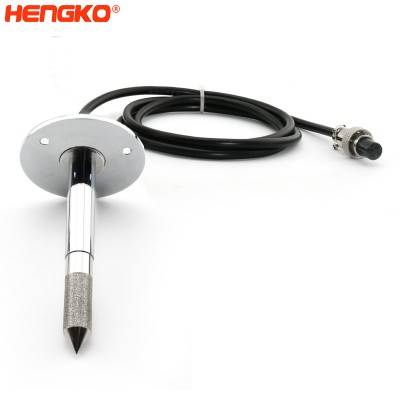
Long-term Stability industrial I2C RHT serious flange humidity sensor probe
HENGKO humidity sensor probe is a trouble-free and cost-effective humidity transmitter with high accuracy and good stability. It is suitable for volume appli...
View Detail -
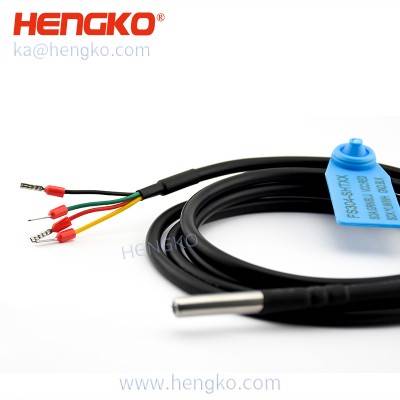
IP67 waterproof stainless steel 316 micron porous sintered temperature humidity sensor ...
HENGKO wifi digital temperature and humidity module adopt high precision RHT series sensor equipped with a sintered metal filter shell for large air permeabi...
View Detail -
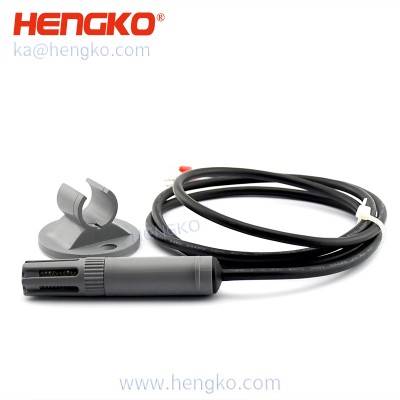
RS485 HT300X Digital Temperature and humidity sensor with cost-effective humidity probe...
HENGKO air temperature and humidity probe consist of high precision RHTx series sensor module, one meter 4-pin cable, a humidity sensor housing, and a cable ...
View Detail -

HENGKO SD123-T10 waterproof Temperature and Humidity Transmitter 485modbus for environm...
HENGKO analog temperature and humidity module adopt high precision RHT series sensor equipped with a sintered metal filter shell for large air permeability, ...
View Detail -
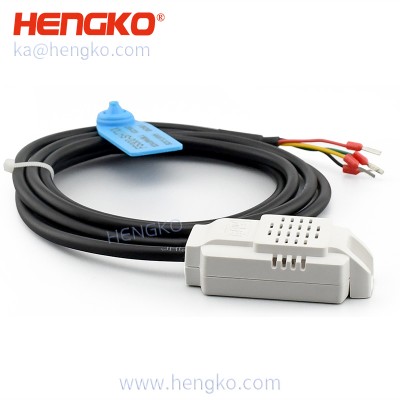
IP65 temperature and humidity sensor probe for demanding relative humidity measurement
HENGKO humidity probe detector can be applied in various fields: telepoint base stations, electronic control cabinet, production site, storehouse, machine ro...
View Detail -

digital temperature and humidity sensor probe with plastic enclosure – fruit and ...
HENGKO high temperature and humidity probe adopt high precision RHT series sensor equipped with a sintered metal filter shell for large air permeability, fas...
View Detail -
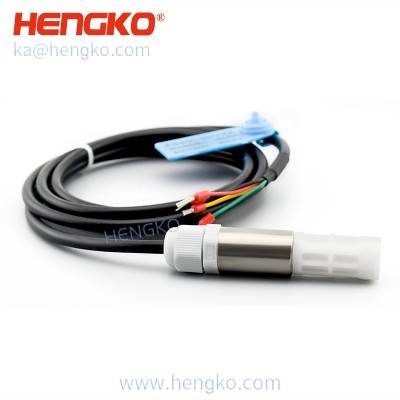
Protective digital dustproof waterproof I2C temperature and relative humidity sensor pr...
HENGKO waterproof humidity sensor probe provides 2-stage water impermeability. The inner PCB has perfusion and encapsulation protection and the humidity prob...
View Detail -
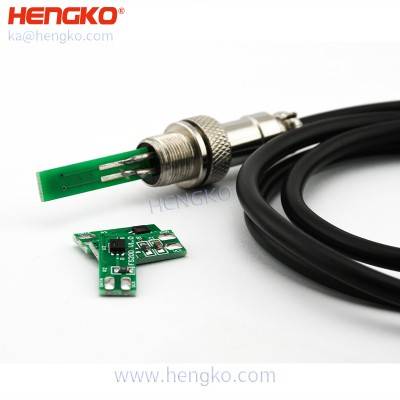
PCB circuit board assembly for I2c humidity temperature sensor waterproof for environme...
HENGKO temperature and humidity module adopt high precision RHT series sensor equipped with a sintered metal filter shell for large air permeability, fast ga...
View Detail -
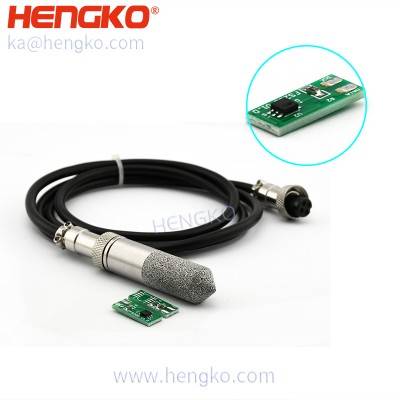
HENGKO RHT series high prisicion electronic PCB chips for temperature and humidity sensor
HENGKO temperature and humidity module adopt high precision RHT series sensor equipped with a sintered metal filter humidity sensor housing for large air per...
View Detail -
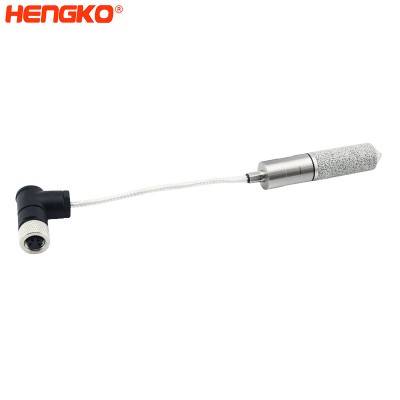
Waterproof digital temperature and humidity probe for environmental measurement
HENGKO wifi digital temperature and humidity module adopt high precision RHT series sensor equipped with a sintered metal filter shell for large air permeabi...
View Detail -
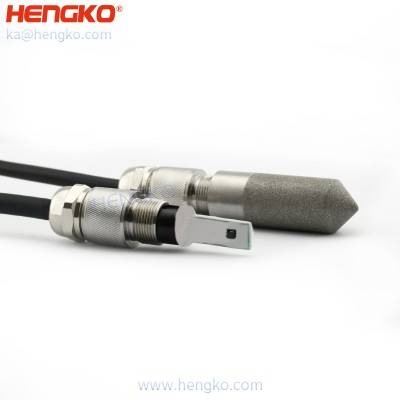
Digital 4-20ma outdoor egg incubator temperature humidity controller sintered metal RH...
HENGKO temperature and humidity sensors can be applied in various fields: telepoint base stations, electronic control cabinets, production sites, storehouses...
View Detail
Main Features of Temperature and Humidity Probe
1. Accuracy: High precision, low power consumption, good consistency, ultra-wide voltage input ,
HENGKO's temperature and humidity probe adopts top quality imported I2C Sensor, which
has high precision and high stability.
2. Range: Wide Measurement Range and a large range ratio. Temperature and humidity probes
should be able to measure a wide range of temperature and humidity values, depending on
the specific application.
3. Waterproof : Temperature and humidity sensor IP66 waterproof and dustproof, strong
anti-interference ability
4. Quality Sensor Chip : Chip Top brand sensor chips, accurate measurement, wide range,
ultra-small integrated temperature and humidity sensor module
5. CPU: The sensor probe has a built-in high-performance processor, which better solves
the problems of space, cost and signal attenuation
6. Response time: Temperature and humidity probes should have a fast response time,
meaning they should be able to detect changes in temperature and humidity quickly.
7. Durability: HENGKO's Temperature and humidity probes use 316L Stainless Steel
Sheet that is durable and able to withstand the conditions of the environment in which
they are used.
8. Connectivity: Temperature and humidity probes may be connected to a data logger or
other monitoring system, allowing the collected data to be recorded and analyzed.
9. Calibration: Temperature and humidity probes may need to be calibrated periodically
to ensure that they are accurately measuring temperature and humidity.
Do you know Different Design Requirement of
Temperature Sensor Probe and Humidity Sensor Case ?
Actually, some sensor project only need humidity monitor and some need to monitor temperature and humidity at the same time,
but there are some difference to protect the two sensor , so we can use different design probe or case, please check as follow details,
hope can help you to find right sensor probe for your sensor products.
Temperature Sensor Probe Design Requirements:
1. Material Compatibility:
The temperature sensor probe should be made of materials that are compatible with the range of temperatures it will be exposed to. It should withstand both high and low temperatures without degradation or affecting accuracy.
2. Fast Response Time:
In some applications, a fast response time is crucial to capture rapid temperature changes accurately. The probe design should minimize thermal lag to provide real-time temperature readings.
3. Sealing and Insulation:
The probe should be properly sealed and insulated to protect the internal components from external elements, moisture, and contaminants. This ensures reliable and consistent performance over time.
4. Mechanical Strength:
The probe should be mechanically robust to withstand handling, insertion, or any mechanical stresses it might encounter in its application environment.
5. Calibration and Accuracy:
Precision is essential in temperature sensing. The design should allow for accurate calibration and maintain accuracy over the desired temperature range.
6. Size and Form Factor:
The size and shape of the probe should be suitable for its intended application. In some cases, a slim and flexible probe might be necessary to fit into tight spaces.
7. Mounting Options:
The probe design should accommodate various mounting options, such as surface mounting, probe tip insertion, or immersion probes.
8. Output Signal:
Depending on the application, the temperature sensor probe may require analog or digital output signals. The design should align with the signal requirements of the data acquisition system or controller.
Humidity Sensor Case Design Requirements:
1. Material Selection:
The case material should be non-reactive to humidity and should not introduce moisture or contaminants into the sensor. Materials like ABS or polycarbonate are commonly used for their moisture resistance.
2. Protection from Dust and Water:
The case design should provide adequate protection against dust and water ingress to prevent damage to the humidity sensor.
3. Ventilation:
Proper ventilation or breathability is essential to allow air circulation while protecting the sensor. This ensures accurate humidity measurements and avoids condensation on the sensor surface.
4. Enclosure Sealing:
The case should have reliable sealing mechanisms, such as gaskets or O-rings, to maintain a tight seal and protect the humidity sensor from external moisture.
5. Mounting and Installation:
The case design should facilitate easy mounting and installation in various applications. It should also allow for easy access to the sensor for maintenance or calibration.
6. Environmental Resistance:
The case should be designed to withstand the environmental conditions it will encounter. It should be resistant to UV radiation, temperature extremes, and chemical exposure if applicable.
7. Integration with Other Systems:
The case design should consider how it will integrate with the overall system or device where the humidity sensor is used.
8. Calibration and Accuracy:
The design should allow for calibration and re-calibration of the humidity sensor, ensuring accurate measurements throughout its service life.
By considering these different design requirements for temperature sensor probes and humidity sensor cases, manufacturers can create reliable and accurate sensors suitable for a wide range of applications and environments.
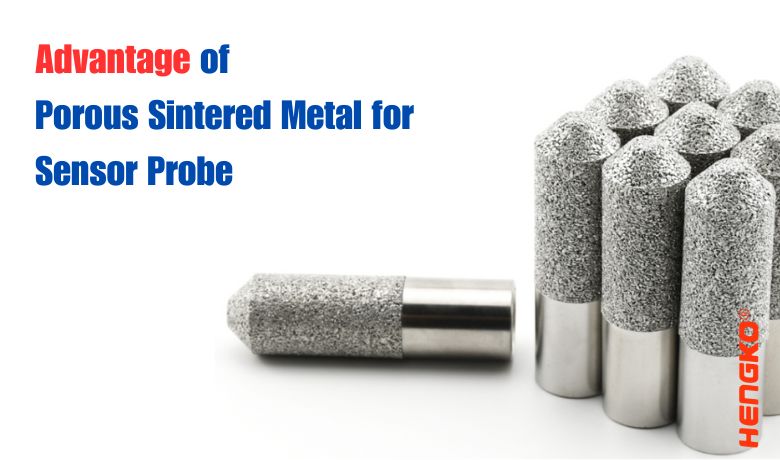
Advantage of Porous Sintered Metal for Sensor Probe ?
As you can see most of humidity sensor case or temperature humidity sensor probe use porous metal cover,
not use pc cover, do you why ? here we list some advantage of porous metal probe, hope can help you know
more details, and sure you can find HENGKO and contact us to OEM your special sensor case as your application
requirement.
Using porous sintered metal for sensor probes offers several advantages, making it a popular choice in various
applications. Here are some key advantages:
1. High Porosity and Permeability:
Porous sintered metals have a high level of interconnected pores, providing excellent permeability to gases and liquids. This characteristic is advantageous for gas or liquid sensors as it allows for efficient diffusion of the target analyte to the sensor's active surface.
2. Uniform Structure:
The sintering process creates a uniform and controlled structure of the porous material. This uniformity ensures consistent and predictable sensor performance, leading to accurate and reliable measurements.
3. Mechanical Strength and Durability:
Sintered metal probes are mechanically strong and resistant to mechanical stresses, making them suitable for rugged environments and applications that involve handling or mechanical manipulation.
4. Temperature and Chemical Resistance:
Porous sintered metals can withstand a wide range of temperatures, making them suitable for high-temperature applications. They are also chemically resistant, ensuring stability and longevity even in harsh chemical environments.
5. Compatibility with Various Gases and Liquids:
The choice of sintered metal material can be tailored to specific applications, ensuring compatibility with different gases and liquids. This versatility makes it suitable for a broad range of sensing applications.
6. Low Flow Resistance:
The porous structure allows gases or liquids to pass through with low flow resistance, reducing pressure drop and energy consumption in applications involving fluid flow monitoring.
7. Fast Response Time:
The porous structure facilitates rapid diffusion and response to changes in the concentration of gases or liquids, enabling fast response times for dynamic measurements.
8. Easy Surface Modification:
The surface of the porous sintered metal can be modified or functionalized to enhance its sensing properties or to make it selective to specific analytes. This adaptability allows for customization based on the application's requirements.
9. No Particle Shedding:
Unlike some filter materials, porous sintered metal does not shed particles or fibers over time, ensuring a clean and contaminant-free sensing environment.
10. Wide Range of Pore Sizes:
Porous sintered metals are available with a range of pore sizes, allowing the selection of the most appropriate size to suit the target analyte's diffusion requirements.
11. Economical Manufacturing:
Sintering is a cost-effective and scalable manufacturing process, making the production of porous sintered metal sensor probes feasible for mass production.
Due to these advantages, porous sintered metal is commonly used in various sensing applications, including gas sensors, liquid sensors, humidity sensors, and filtration systems, where its unique properties contribute to accurate and reliable measurements.
Application of Temperature and Humidity Sensor
The Humidity Probe Can Used to Many Industry, You Can Easy Find in Your Daily Life
1. Application in the Family
With the improved living standards, people have higher requirements for their living environment. The digital
display electronic clocks, household humidifiers, temperature, humidity meters, and other products on the
market are equipped with temperature and humidity sensors to control indoor temperature and humidity at
any time. Make the living environment more comfortable.
2. Application in Industry
A typical application is that temperature and humidity sensors can be used in wet concrete drying to record
relevant data in a timely and accurate manner, providing reliable data for construction. With the rapid development
of science and technology, the application of temperature and humidity sensors plays an increasingly important
role in different fields.
3. Application in Agriculture and Animal Husbandry
In the production of agriculture and animal husbandry, especially in the production of some cash crops, if it is
necessary to determine the influence of temperature and humidity in the environment on the growth of seedlings, etc.,
it is also necessary to use temperature and humidity sensors for data collection and monitoring, to obtain the best
results. Economic benefits.
4. Application in Archives and Cultural Relics Management
The paper is brittle or damp and moldy in the environment of high and low temperature and high and low humidity,
which will damage the archives and cultural relics and bring unnecessary trouble to various researchers. Applying
temperature and humidity sensors solves the complicated temperature and humidity recording work in the past,
saving money on Costs of archives and heritage conservation.
Questions for Temperature and Humidity Probe:
What Does a Humidity Probe Do?
The humidity probe is very important elements for the humidity sensor or transmitter ect,
have two main functions:
1. To Protect the sensor inside, need to be have strong structure
2. Ensure and filter the temperature and humidity to be same in side and outside.
The Sintered Metal Probe can protect the sansor and transmitter safety that senses,
measures, and reports the relative humidity (RH) of air or determines the amount of
water vapor present in gas mixture (air) or pure gas.
Why Do I Need a Humidity Sensor?
For now, many industry care more for the temperature and humidity, because some times, the temperature or
humidity can affect the quality of your products, special for the storage before shipping. It is related to whether
our engineering project can be carried out smoothly.
If you need to pay attention to temperature and humidity in the production or storage process of your product,
then we recommend that you use professional temperature and humidity monitoring equipment to pay enough
attention to prevent problems and reduce risks.
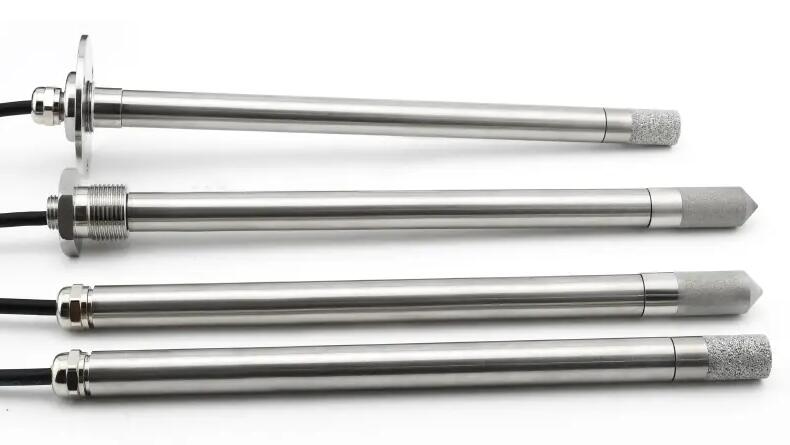
Where Do We Use Humidity Transmitter ?
For Application in the Industry, Temperature and Humidity Transmitters, also named Humidity sensors, are
most often used in industries such as HVAC systems, food processing, meteorology, microelectronics,
biomedical, agriculture, pharmaceuticals, and structural health monitoring.
Due to the small size of the temperature and humidity and low cost, resistive temperature sensors are
mainly used in domestic, residential, and industrial applications.
Thermal conductive temperature sensors are usually used in drying machines, food dehydration,
pharmaceutical plants, etc. here we list Some of the humidity sensors in various applications below.
Industrial:
Some industries must monitor the temperature and humidity, such as chemicals, refineries, metal, or
others where furnaces need humidity sensors, as high humidity will reduce the amount of oxygen in
the air. Other industries like paper, textile, food processing, etc., also need humidity control for
better-quality products.
Agriculture:
During the plant's growth, the soil's moisture is very important, and the plant will grow better if we can
supply or control a suitable temperature and humidity environment. The application of dropper
technology is becoming more and more extensive, especially in modern agricultural planting
represented by greenhouses; one of the important core of an irrigation technique is the need for
precise moisture content for plants. Moreover, indoor vegetation also requires humidity sensors.
Electronics & Semiconductor:
A range of humidity values grades many electronic devices. Generally, this value is between 10
to 50% humidity. Also, the semiconductor fabrication manufacturer must maintain accurate
humidity and temperature values, as even a minute difference can hugely impact production.
Medical:
Medical equipment like ventilators, sterilizers, incubators, etc., need humidity control.
The humidity sensor is also wildly used in biological processes and pharmaceutical plants.
All the applications mentioned above need temperature and humidity measurement,
which needs to use a humidity sensor or humidity transmitter.
Frequently Asked Questions
1. What is a temperature and humidity probe, and what is it used for?
A temperature and humidity probe is a device that measures and records temperature and humidity in a given environment. It is commonly used to monitor the temperature and humidity of a room, greenhouse, or another controlled environment to ensure optimal conditions for plants, animals, or other sensitive materials.
2. How does a temperature and humidity probe work?
A temperature and humidity probe uses sensors to measure the temperature and humidity in the surrounding environment. The sensors may be located within the probe itself or may be separate sensors connected to the probe via a cable. The probe then sends this data to a device, such as a computer or a smartphone, which displays the temperature and humidity readings in real-time.
3. Can a temperature and humidity probe be used outdoors?
Many temperatures and humidity probes are designed for outdoor use and can withstand extreme temperatures and weather conditions. However, it is important to ensure that the probe is properly protected from the elements, as prolonged exposure to rain, snow, or extreme temperatures can damage the sensors and affect the accuracy of the readings.
4. How accurate are temperature and humidity probes?
The accuracy of a temperature and humidity probe can vary depending on the quality and type of sensors used and the surrounding environment. High-quality probes with advanced sensors can provide highly accurate readings, while lower-quality probes may have a larger margin of error.
5. Can a temperature and humidity probe be calibrated?
Yes, some temperature and humidity probes can be calibrated to ensure that they are providing accurate readings. Calibration involves comparing the probe's readings to a known standard, such as a reference thermometer, and making any necessary adjustments to the probe to ensure that it provides accurate readings.
6. How often should a temperature and humidity probe be calibrated?
The calibration frequency for a temperature and humidity probe can vary depending on the specific probe and the environment in which it is used. It is a good idea to calibrate the probe periodically, such as once every few months or whenever the readings seem to be consistently off.
7. Can a temperature and humidity probe be used with multiple devices?
Many temperatures and humidity probes are designed to be used with multiple devices, such as computers, smartphones, or smart home systems. Some probes even come with their app or software that allows you to monitor the readings from your device.
8. How do I set up a temperature and humidity probe?
Setting up a temperature and humidity probe typically involves connecting the probe to a power source, such as a wall outlet or battery, and then connecting the probe to a device, such as a computer or a smartphone, using a cable or wireless connection. Once the probe is connected, you can use the accompanying software or app to set up the probe and begin monitoring the temperature and humidity readings.
9. How do I clean a temperature and humidity probe?
To clean a temperature and humidity probe, it is important to use a soft, dry cloth or a cloth that has been dampened with a mild cleaning solution. Avoid using harsh cleaners or abrasive materials, as these can damage the sensors and affect the accuracy of the readings. It is also a good idea to avoid getting water or other liquids inside the probe, as this can cause damage to the sensors or electronics.
10. What are the common causes of error in a temperature and humidity probe?
There are several common causes of errors in temperature and humidity probes:
1.) Physical damage: The probe may be damaged by physical forces, such as being dropped or bumped, which can cause it to give inaccurate readings.
2.) Electrical interference: Electrical interference from other devices, such as power lines or radio frequency transmitters, can affect the accuracy of the probe's readings.
3.) Exposure to extreme temperatures: If the probe is exposed to extreme temperatures, it may produce inaccurate readings. This can be especially true for probes that are not designed to withstand extreme temperatures.
4.) Poor calibration: If the probe has not been properly calibrated, it may produce inaccurate readings.
5.) Age: As a probe ages, it may become less accurate due to wear and tear.
6.) Contamination: If the probe is exposed to contaminants, such as dust or moisture, it may produce inaccurate readings.
7.) Improper storage or handling: If the probe is not stored or handled properly, it may produce inaccurate readings.
8.) Malfunction: The probe may simply malfunction and produce inaccurate readings.
9.) Incorrect placement: If the probe is placed in an inappropriate location, it may produce inaccurate readings.
10.) To minimize errors and improve the accuracy of temperature and humidity probes, it is important to handle and store them properly, calibrate them regularly, and avoid exposing them to extreme temperatures or contaminants.
Still have any questions or have special application for Temperature and Humidity Probe,
You are welcome to contact us by email ka@hengko.com, you can also send us a inquiry
as follow form, we will send back within 24-Hours :

